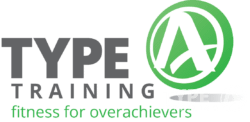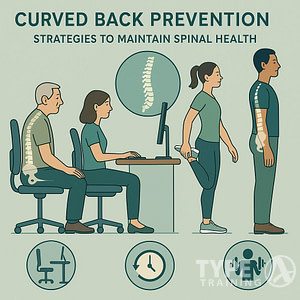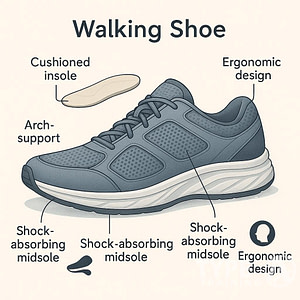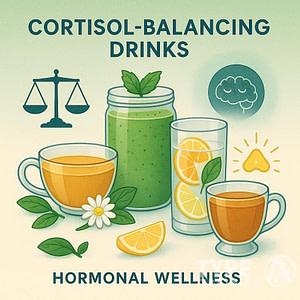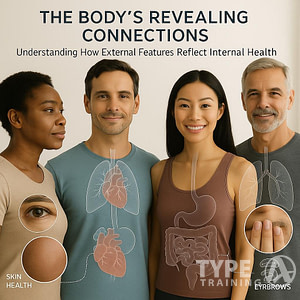Squats are a powerful exercise that can significantly benefit seniors. By incorporating this simple movement into your routine, you can improve strength, balance, and overall health.
Regular squat exercises can help seniors maintain independence and potentially increase longevity.
Performing squats doesn’t require fancy equipment or a gym membership. You can do them at home with minimal space and time investment.
Popular posts:
As you age, maintaining muscle mass becomes crucial for mobility and everyday activities.
Squats target multiple muscle groups, including the legs, core, and back. This comprehensive workout helps seniors stay active, reduce fall risks, and support bone density.
By starting with gentle variations and progressing gradually, you can safely enjoy the benefits of squats well into your golden years.
Key Takeaways
- Squats improve strength, balance, and independence for seniors
- Regular squat exercises can be done at home with minimal equipment
- Proper form and gradual progression ensure safe and effective squat workouts
Benefits of Squats for Seniors
Squats offer numerous advantages for older adults, promoting physical health and independence. This exercise can significantly enhance your quality of life as you age.
Improving Balance and Coordination
Squats help you maintain stability and prevent falls. By engaging your core muscles and lower body, you’ll develop better proprioception – your body’s ability to sense its position in space.
Regular squat practice strengthens the muscles responsible for keeping you upright. This increased strength translates to improved balance in daily activities.
You’ll notice enhanced coordination as squats require multiple muscle groups to work together. This synchronization carries over to other movements, making you more agile and sure-footed.
Enhancing Range of Motion
Squats can increase your flexibility and mobility. As you perform the exercise, your joints move through a wide range, promoting better overall function.
Your hip flexors, often tight from prolonged sitting, benefit greatly from squats. The movement helps lengthen these muscles, improving your posture and reducing back pain.
Ankle mobility also improves with squats. This increased range of motion aids in walking and climbing stairs with greater ease.
Boosting Muscle Groups Vitality
Squats target major muscle groups in your lower body. Your glutes, quads, and hamstrings all work during this exercise, promoting strength and muscle mass retention.
As you age, maintaining muscle becomes crucial. Squats help combat age-related muscle loss, known as sarcopenia.
Strong leg muscles support your joints, potentially reducing the risk of osteoarthritis. This strength can also improve your bone density, lowering the risk of fractures.
Augmenting Daily Functionality
Squats mimic movements you perform in everyday life. By practicing this exercise, you’re essentially training for daily tasks.
Getting up from chairs or the toilet becomes easier with stronger legs. You’ll find activities like gardening or picking up objects from the floor less challenging.
Squats can boost your confidence in performing household chores. The increased strength and stability allow you to maintain your independence for longer.
Squat Variations Suitable for Seniors
Seniors can benefit from various squat modifications that enhance safety and effectiveness. These adaptations cater to different fitness levels and mobility needs.
Box Squats for Beginners
Box squats offer a secure starting point for seniors new to squatting. Place a sturdy chair or bench behind you.
Stand with feet shoulder-width apart. Lower your body as if sitting down, gently touching the surface without fully resting.
Push through your heels to stand back up.
This variation helps build confidence and proper form. It reduces the risk of falling and provides a clear depth target.
Start with higher surfaces and gradually lower them as you progress. Aim for 2-3 sets of 8-12 repetitions.
Chair Squats for Stability
Chair squats provide excellent support for seniors with balance concerns. Begin seated in a stable chair.
Place your feet slightly in front of your knees. Lean forward slightly and stand up, using the chair’s arms if needed.
Slowly lower yourself back to a seated position.
This exercise strengthens leg muscles and improves the ability to rise from seated positions. It’s ideal for daily functional movements.
Perform 10-15 repetitions, taking breaks as necessary. Focus on controlled movements and proper breathing.
Body Weight Squats for Easy Access
Body weight squats require no equipment, making them convenient for home workouts.
Stand with feet hip-width apart. Lower your body as if sitting back into a chair.
Keep your chest up and knees aligned with your toes. Push through your heels to return to standing.
This squat variation enhances overall leg strength and stability. It’s easily modifiable to suit your fitness level.
Start with shallow squats and increase depth as you become stronger. Perform 2-3 sets of 10-12 repetitions. Use a wall or countertop for support if needed.
Executing Squats Safely
Proper squat technique and appropriate intensity are essential for seniors to maximize benefits while minimizing injury risks. Attention to form, repetitions, and common pitfalls will help ensure safe and effective squatting.
Proper Squat Form
Start with your feet shoulder-width apart, toes pointing slightly outward.
Keep your chest up and shoulders back. Engage your core muscles.
Begin the descent by pushing your hips back, as if sitting into a chair.
Lower yourself until your thighs are parallel to the ground, or as far as comfortable.
Keep your knees aligned with your toes, not extending past them. Maintain a neutral spine throughout the movement.
Push through your heels to return to the starting position. Squeeze your glutes at the top.
Breathe steadily – exhale as you rise, inhale as you lower.
Determining Appropriate Repetitions
Start with 1-2 sets of 5-8 repetitions.
As you build strength and confidence, gradually increase to 2-3 sets of 8-12 reps. Listen to your body and adjust accordingly.
Focus on quality over quantity. Perform each rep with proper form.
If you feel strain or discomfort, reduce the number of repetitions or take a break.
Consider using a timer instead of counting reps.
Aim for 30-60 seconds of continuous squatting, resting for 1-2 minutes between sets.
Avoiding Common Mistakes
Don’t let your knees cave inward. Keep them aligned with your toes throughout the movement.
Avoid rounding your back or hunching forward.
Don’t rush the movement. Control your descent and ascent.
Maintain balance by keeping your weight evenly distributed across your feet.
Don’t lock your knees at the top of the squat. Maintain a slight bend to keep tension on your muscles.
If using weights, don’t lift more than you can handle with proper form.
Use a sturdy chair or counter for support if needed.
As you progress, try unassisted squats. Remember, consistency and proper technique are key to safe, effective squatting.
Integrating Squats into Daily Routine
Incorporating squats into your daily life can significantly boost your overall fitness and longevity. Regular practice helps maintain strength and mobility as you age.
Starting with Daily Practices
Begin your squat routine with simple exercises you can do at home.
Try chair squats, where you lower yourself to a seated position without fully sitting down. Aim for 5-10 repetitions, twice daily.
Wall squats are another great option. Lean against a wall and slide down until your thighs are parallel to the floor.
Hold for 10-30 seconds, gradually increasing duration as you get stronger.
Use everyday activities as reminders to squat. Do a few squats while brushing your teeth or waiting for your coffee to brew.
Combining Squats with Other Activities
Integrate squats into your walking routine for added benefits.
Every 5-10 minutes of walking, pause to perform 3-5 squats. This combination enhances both cardiovascular health and lower body strength.
Try squat breaks during TV time. Stand up and do 5 squats during commercial breaks or between episodes.
Gardening presents natural opportunities for squatting. Use proper form when bending to tend to plants or pull weeds.
Always listen to your body and consult your doctor before starting a new exercise regimen.
Start slowly and progress gradually to avoid injury and ensure long-term success.
Complementary Activities for Squats
Incorporating diverse activities alongside squats can enhance overall fitness and longevity for seniors. These complementary exercises target different aspects of physical health, creating a well-rounded routine.
Yoga for Flexibility and Strength
Yoga offers an excellent complement to squats, focusing on flexibility and balance.
Gentle poses like Chair Pose and Warrior I can strengthen the same muscle groups used in squats.
Practice Sun Salutations to improve overall body awareness and coordination.
Try holding poses for 5-10 breaths to build endurance. Incorporate breathing exercises to enhance relaxation and reduce stress.
Yoga also helps prevent injuries by increasing joint mobility and muscle elasticity.
For best results, aim for 2-3 yoga sessions per week, each lasting 20-30 minutes. Remember to listen to your body and modify poses as needed.
Tennis for Aerobic Fitness
Tennis provides an excellent aerobic workout while being gentler on the joints than high-impact activities. It improves cardiovascular health, hand-eye coordination, and reflexes.
Start with doubles matches to ease into the sport.
Gradually increase playing time and intensity as your fitness improves. Aim for 2-3 tennis sessions per week, lasting 30-60 minutes each.
Focus on proper footwork to enhance balance and agility.
Practice serving and returning shots to build upper body strength.
Remember to warm up before playing and cool down afterwards to prevent muscle soreness.
Strength Training for Muscle Development
Strength training complements squats by targeting different muscle groups and preventing muscle imbalances. Use resistance bands or light weights to start.
Perform exercises like chest presses, bicep curls, and shoulder raises. Aim for 2-3 sets of 10-15 repetitions for each exercise.
Focus on proper form to maximize benefits and minimize injury risk.
Include core exercises like planks and bird dogs to improve overall stability. Gradually increase weight or resistance as you build strength.
Schedule strength training sessions 2-3 times per week, allowing rest days between workouts for muscle recovery.
Squats in Reference to Overall Senior Health
Squats play a crucial role in maintaining and improving health for older adults. This functional exercise supports longevity and independence while serving as a preventative measure against various age-related issues.
Long-Term Health and Independence
Incorporating squats into your routine can significantly enhance your long-term health as a senior. This exercise strengthens your leg muscles, improving mobility and balance.
Strong legs help you perform daily activities with ease, reducing the risk of falls and injuries.
Squats also support bone density, crucial for preventing osteoporosis. By engaging multiple muscle groups, they promote overall body strength and coordination.
This comprehensive workout contributes to better posture and reduced back pain.
Regular squat practice can boost your cardiovascular health, enhancing blood circulation and oxygen flow throughout your body. This improved circulation supports organ function and cognitive health.
Squats as Preventative Health Measures
Incorporating squats into your exercise routine serves as a powerful preventative tool. By strengthening your lower body, you reduce the risk of falls – a major concern for seniors.
This exercise enhances your stability and balance, making everyday movements safer.
Squats help maintain muscle mass, combating age-related muscle loss (sarcopenia). This preservation of muscle tissue supports a healthy metabolism and weight management.
The exercise also promotes joint health, potentially reducing the risk of arthritis and improving flexibility.
Regular squat practice can boost your immune system, making you more resilient to illnesses. It also supports healthy digestion and can help prevent or manage chronic conditions like diabetes and heart disease.
Frequently Asked Questions
Squats offer numerous benefits for seniors looking to enhance longevity. These exercises can be adapted to different fitness levels and physical limitations.
What are the benefits of doing squats for seniors?
Squats help maintain muscle mass and bone density as you age. They improve balance and stability, reducing fall risks. Squatting also enhances mobility, making daily activities easier.
How many squats should a senior perform daily to improve longevity?
Start with 5-10 squats per day and gradually increase. Aim for 2-3 sets of 10-15 squats, 2-3 times a week. Listen to your body and adjust as needed.
Can seniors with bad knees safely perform squats?
Yes, with modifications. Try chair squats or wall squats to reduce knee strain. Consult a physical therapist for personalized advice and proper form guidance.
What specific squat exercises are recommended for seniors seeking to live longer?
Chair squats, wall squats, and bodyweight squats are excellent options. Sumo squats can improve hip flexibility. Partial squats are beneficial for those with limited mobility.
Is there an age limit for seniors who want to incorporate squats into their exercise routine?
There’s no strict age limit. Your fitness level and health status matter more than age. Always consult your doctor before starting a new exercise program.
What types of squats can seniors do without using weights?
Bodyweight squats are effective and require no equipment.
Wall slides, chair squats, and calf raises are also great weight-free options.
These exercises build strength and improve balance safely.
